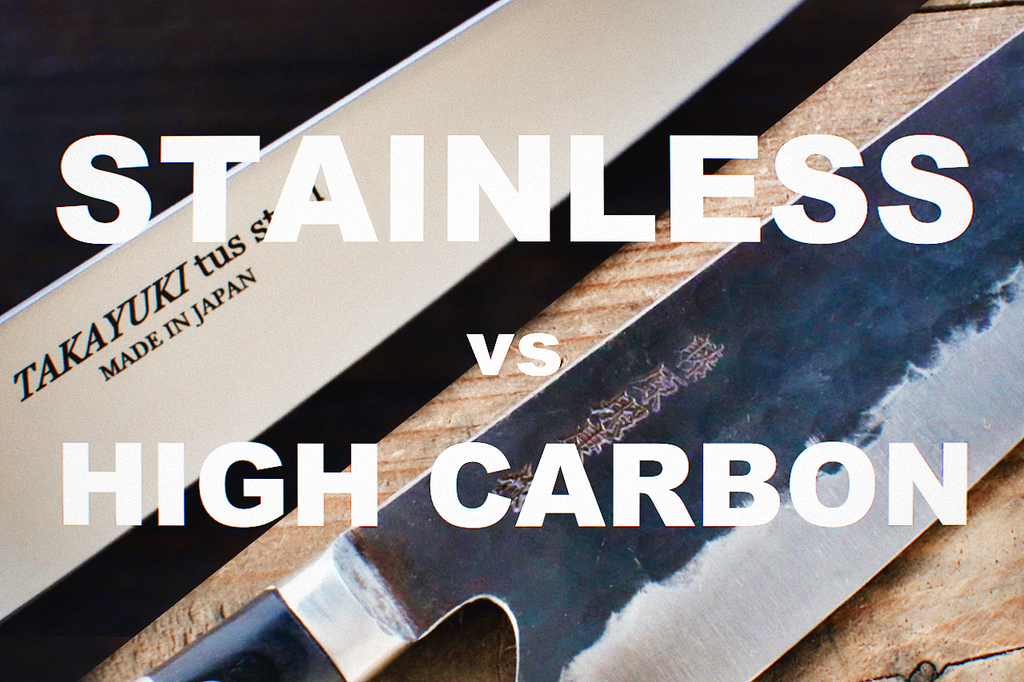Stainless vs Non-Stainless
Stainless or non-stainless that is the question.
We usually break down steel types into two categories - Stainless Steels & Non-Stainless, or High Carbon Steels. It's what they say on the tin: stainless steels contain properties that allow them to be stain resistant and unlikely to rust. High carbon steels, as the name implies, have a larger ratio of carbons to allow for better sharpness and edge retention, though leave the blade prone to rusting and chipping.
Generally, stainless steels are easier to maintain and are softer and more durable. High carbon steels require more care due to their ability to easily rust and chip, but can also achieve a sharper edge for a longer period of time.
Stainless steels are very good at resisting the formation of rust and preventing discoloration. This does not mean that this will never happen though, if a stainless steel is mistreated it will rust. Some stainless steels will also discolor more easily than others. To do this, chromium is added to the steel to give it the stainless property. The higher the amount of chromium the more stainless a steel will become, at the cost of increasing the grain size.
Today, with the advancement in steel technology, there are many high quality stainless steels that have a very fine grain structure and will compare and even go beyond some of the properties of non-stainless steels.
Non-stainless steel, also referred to as high carbon steel, will rust if not properly cared for and is guaranteed to discolor over time. These steels will have a very fine grain structure and will typically be less prone to chipping compared to a stainless steel of equal hardness.
Many people love these steels because of these properties as well as appreciating the unique patina that will develop on the blade. The patina is the discoloration that happens and can come in a range of colors. Most likely you will get a dark greyish to blackish patina from general kitchen use. This will also help the blade resist rusting after it forms, so developing a good patina across the entire blade is very beneficial.
Note: The term high carbon refers to a steel that has a carbon content above .55% and most steels, including stainless steels, now have a carbon content of .55%.


Comments (0)